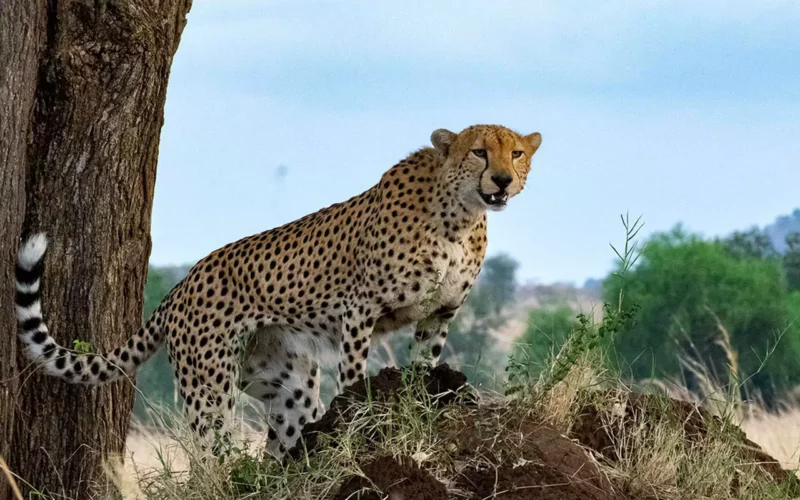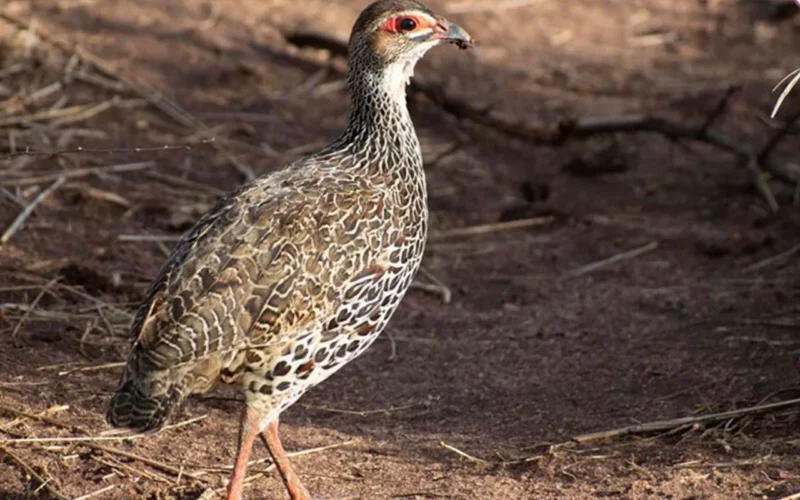Ranked as Africa’s finest wildness and 3rd Best Wilderness Park in CNN’s travel awards, Kidepo Valley National Park (KVNP) is the most alluring park in Uganda. This remote and wilderness scenic landscape is characterized by semi-arid expansive savanna plains, rugged and rocky outcrops and lush mountain ranges. The varied vegetation ranges from golden open and lightly wooded savanna plains, mosaic forests interspersed with Borassus palms and dry-scrub, scattered patches of riparian woodland, montane forests and thick miombo woodland.
Kidepo Valley NP remoteness makes it the less-visited park in Uganda which has allowed it to retain its untamed wilderness appeal.
Kidepo Valley NP Biodiversity at a glance
Kidepo protects the most exciting fauna anywhere in the country with 470 bird species and 77 species of mammals including most species found nowhere else in Uganda.
- Park Size: 1442 sq.km
- Altitude range 914-2797m
- Bird Species: 470 species
- Mammal Species: 77 species
- Drive time and distance from Kampala: 565 km /9 hrs
Attractions and Activities to do In Kidepo Valley NP

-
Wildlife game drives
Kidepo Valley NP offers an exclusive and off-the-beaten-path wilderness expereince ranking this remote wilderness national park an unmatched wildlife safari destination. With rugged landscapes hemming in unspoilt open savanna grasslands and plains, Kidepo is a true African wilderness that opark teeming with a diversity of game.
The park is nourished by two seasonal river systems of Kidepo river in the North and Narus river system in the south, which creates a migration corridor of animals following the rain patterns. These river systems are an Oasis in the Desert! interpretive game viewing expereince runs in between these valleys offering up-close sightings to a variety of game including Jackson’s (Lelwel) Hartebeest, Guenther’s Dikdik, Eland, Bohor Reedbuck, Oribi, Common Duiker, Klipspringer, Deffasa Waterbuck and the Burchell’s Zebra (a unique mane-less race found nowhere else). The savannas host the terrestrial Patas Monkey, endangered Nubian’s Giraffe, herds of Cape Buffalo with luck…Greater and Lesser Kudu. Predators include Lions, Leopard, side Striped Jackal, Spotted Hyena, Cheetah, Bat-eared Fox, Black-backed Jackal, Caracal among others.
-
Birdwatching in Kidepo Valley NP
Kidepo Valley NP ranks the best ranking hotspot in the country owing to its location within the Somalia-Masai Biome habitat, where 23 of the total 32 Restricted Biome species occur nowhere else in the country. Here at Kidepo, the horn-of-Africa bird specialists unique to this semi-arid, dry-scrub and thorny bush vegetational extend here on their range limit. Species highlights include; Karamoja Apalis (now endemic to Uganda), Clapperton’s Francolin, Rose-ringed Parakeet, Secretary Bird, Fox Kestrel, Brown Parisoma, Pygmy Falcon, Yellow-necked Spurfowl and Jackson’s Hornbill, Golden-Pipit, Rufous Chatterer, Red and Yellow Barbets and more.
Check out specialised birding tour here dedicated to this bird-rich area.
-
Guided Nature Walks
Walking safaris in Kidepo Valley National Park top the bucket-list of activities and things to do while in this wilderness setting. These guided walks are tailored to your individual interests where options range from dedicated birding walks, seeking out variety of dry-country bird specialists local and restricted to these habitats. The more adrenaline adventurers can hike onto any of the towering mountain ranges especially Mt. Morungole for stunning scenery. For dedicated adventurers seeking ample time in the wilderness, our recommended guided walk along the seasonal river of Kidepo, offers incredible scenic views of the meandering Borassus palm-lined riverbed and hot springs.
-
Wilderness Camping
While here, enjoy a night under the stars that illuminate the dark skies over the wilderness savanna plains of Kidepo National Park. Hear the distant roars of lion prides advertising their territories, hear the cracking evil “hyena laughter” and howls and calls of nocturnal characters. Excellent campsite equipped with basic utilities like firewood, pit latrines and water occur in this park and manned by rangers at night.
-
Explore the Karimojong and Ik Cultural Experience
Away from the great scenery this region offers, a recommended adventure activity is a guided-community visit to the Karimojong, a formerly nomadic community of pastoralists with a unique way of life and the Ik people of mountains who are agriculturalists, to explore and the experience of these rich and pure ancient traditions. This guided cultural experience includes a visit to their communities known as manyattas where interactions, folklore and one is encouraged to in for warrior traditional dances.
One popular experience is a visit to Nakipelemoru Manyatta Village just 12m from Kotido the largest East Africa traditional settlement with up 10000 people and the oldest. Nakipelemoru in Karamojong means the “Rock is seen” refers to the ancient sacred rock the Jie people first settled after migrating from Cush the modern Ethiopia.

